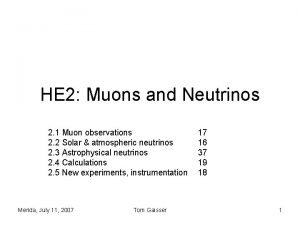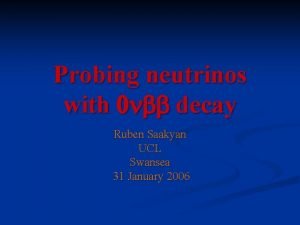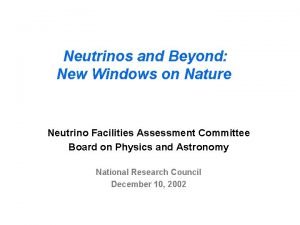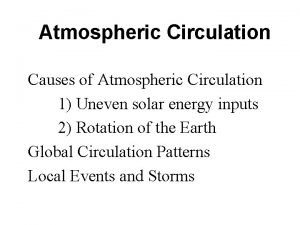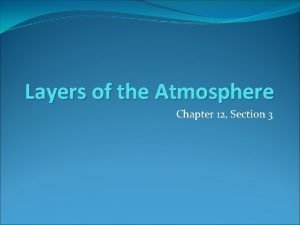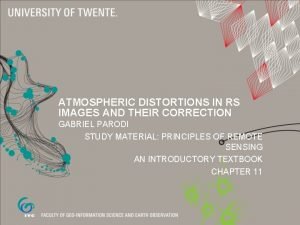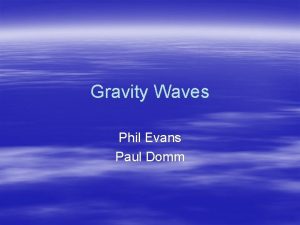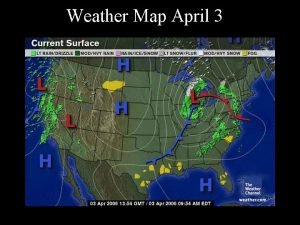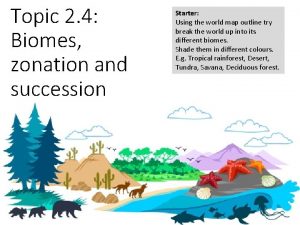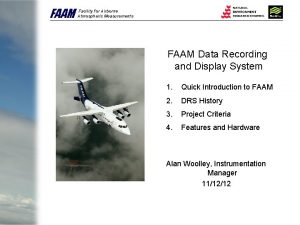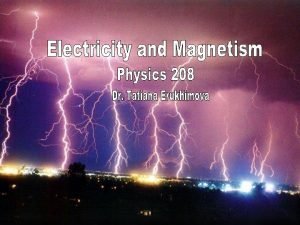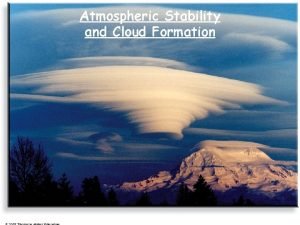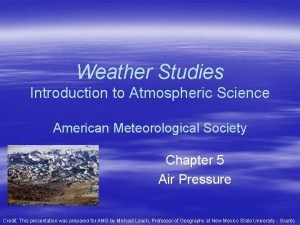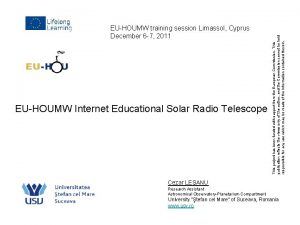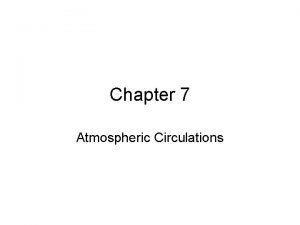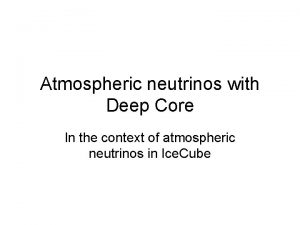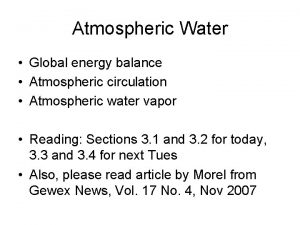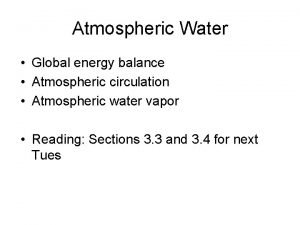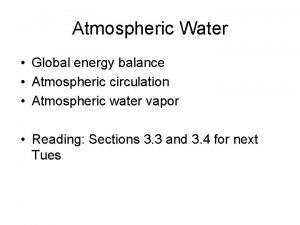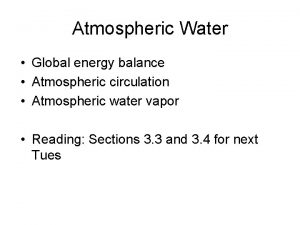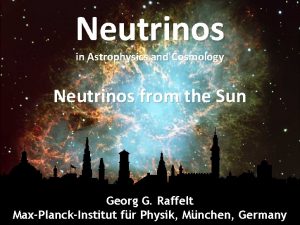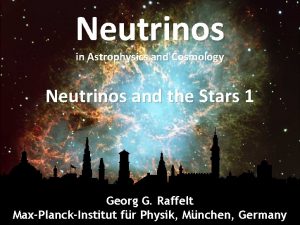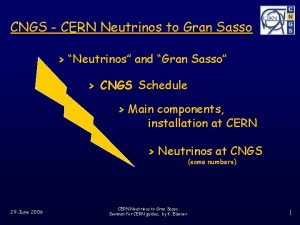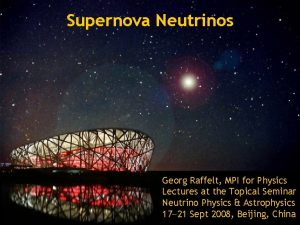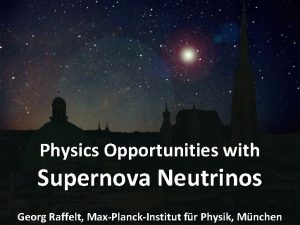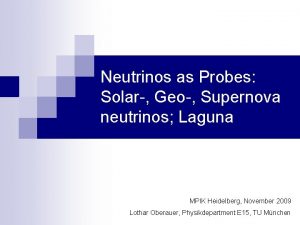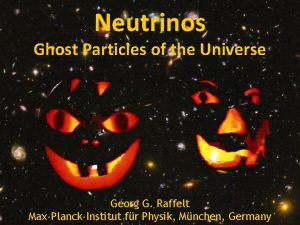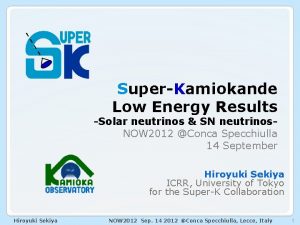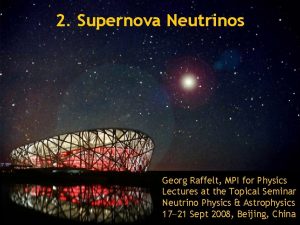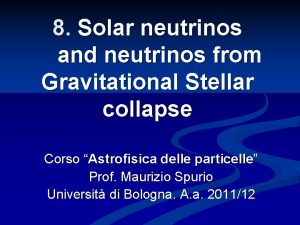Atmospheric neutrinos with Deep Core In the context






























- Slides: 30

Atmospheric neutrinos with Deep Core In the context of atmospheric neutrinos in Ice. Cube

Outline • Atmospheric n in Ice. Cube – Zenith-angle dependence measured √ – Spectrum of atmospheric nm TBD • km 3 extends reach to E(nm) ~ Te. V • Look for new physics – What about electron neutrinos? – Deep core opens lower-energy window • Neutrino oscillation studies • Hierarchy? • Some comments on signal and background for both low and high energy

Atmospheric n spectrum Comment on charm models • RQPM model shown here: (Bugaev et al. , 1998) • ne crossover at 3 Te. V • nm crossover at 100 Te. V • • • p Calculation of Enberg, Reno, Sarcevic (ar. Xiv: 0806. 0418): nm, ne intensities factor 10 lower crossovers factor of two higher p m e Neutrino spectrum summed over all directions from below the horizon ( TKG & M Honda, Ann Revs 52, 153, 2002) nm ne nm

Muons in Ice. Cube-22 (2007) Downward atmospheric muons Upward neutrino-induced muons Patrick Berghaus et al. , Cosmo-08 and ISVHECRI-08

Muon neutrinos in IC 22 6000 /yr expected with point-source cuts

Oscillations + Deep Core = new opportunities < 100 Ge. V q 13 = 0 From Carsten at Utrecht If sin 22 q 13 = 0. 1 nm survival probability nm nt oscillation probability Mena, Mocioiu & Razzaque ar. Xiv: 0803. 3044 v 2

Expected in IC 80 With deep core Standard Ice. Cube 3. 2 E 5 / yr – 2. 7 E 5 / yr = 50 K/yr At trigger level

What about electron neutrinos? They might look like this: Kotoyo Hoshina IC 22 But it can also be a muon with a large radiative energy loss

On the other hand muon energy loss is stochastic • Strange things can happen – For example, here’s the energy loss history of the first Te. V random muon simulated with the Lipari-Stanev code: 2 photo-nuclear interactions One low-energy brem

Naïve expectations for rates of atmospheric n • Assumptions: – Muon neutrinos: full efficiency for m range > 0. 5 km (En > 150 Ge. V) – Electron neutrinos: Efficiency for ne from PDD is 0 for En < Te. V • Note advantage of lowering Eth for ne – ~800 ne interactions per km 3 yr Spectrum of ne events per km 3 yr (perfect eff)

Differential and integral spectrum of atmospheric muons Differential Integral Energy loss: Em (surface) = exp{ b X } · ( Em +e ) - e Set Em = e { exp[ b X ] - 1 } in Integral flux to get depth – intensity curve

High-energy atmospheric neutrinos Primary cosmic-ray spectrum (nucleons) Nucleons produce pions kaons Kaons produce most nm for 100 Ge. V < En < 100 Te. V charmed hadrons that decay to neutrinos Eventually “prompt n” from charm decay dominate, …. but what energy?

Importance of kaons at high E • Importance of kaons – main source of n > 100 Ge. V – p K+ + L important – Charmed analog important for prompt leptons at higher energy vertical 60 degrees

Neutrinos from kaons Critical energies determine where spectrum changes, but AKn / Apn and ACn / AKn determine magnitudes New information from MINOS relevant to nm with E > Te. V

Electron neutrinos K+ p 0 ne e± ( B. R. 5% ) KL 0 p± ne e ( B. R. 41% ) Kaons important for ne down to ~10 Ge. V

Te. V m+/m- with MINOS far detector • 100 to 400 Ge. V at depth > Te. V at production • Increase in charge ratio shows – p K+ L is important – Forward process – s-quark recombines with leading di-quark – Similar process for Lc? x 1. 37 1. 27 x Increased contribution from kaons at high energy

MINOS fit ratios of Z-factors • Z-factors assumed constant for E > 10 Ge. V • Energy dependence of charge ratio comes from increasing contribution of kaons in Te. V range coupled with fact that charge asymmetry is larger for kaon production than for pion production • Same effect larger for nm / nm because kaons dominate

Muon veto of atmospheric n

Vertical neutrino flux: comparison M. Honda et al. , PR D 70 (2004) 043008 G. D. Barr et al. (Bartol flux) PR D 70 (2004) 023006 http: //www-pnp. physics. ox. ac. uk/~barr/fluxfiles/ M. Honda et al. PR D 75 (2007) 043006

Unfolding SK measurements Gonzalez-Garcia, Maltoni, Rojo JHEP 2007

Atmospheric neutrino spectrum x 1. 37 1. 27 AMANDA atmospheric neutrino ar. Xiv: 0902. 0675 v 1 x increased m+/m- charge ratio in MINOS far detector suggests corresponding increase in Te. V neutrino flux from contribution of p K+ L

Neutrinos from charm • Main source of atmospheric n for En > ? ? • ? ? > 20 Te. V • Large uncertainty! Gelmini, Gondolo, Varieschi PRD 67, 017301 (2003)

Angular dependence For e. K < E cos(q) < ec , conventional neutrinos ~ sec(q) , but “prompt” neutrinos independent of angle Uncertain charm component most important near the vertical

Muon multiplicity at depth protons Iron Total energy per nucleus

Some comments on m background Atmospheric muons (shape only)

Muon energy spectrum at depth Invariant shape for slant depth > ~ 2 km. w. e. Nm= 7 5. 5 4. 4 2. 0 0. 2 0. 1 Nm=40 32 25 11 1. 2 0. 7

Muon energy spectrum at depth Nm=230 180 145 64 7. 1 0. 4 Nm=1300 1000 830 370 41 2

Energy deposit per 17 m Todor’s plot: --a single event ~ 300 muons A B

New Geometries Slightly better performance for highest energy muons coming sideways Best for both highest and intermediate (0. 1 -10 Pe. V) energy muons (probably preferred) Drilling of 9 holes in the last season inside a circle with radius of 423 m is possible. The most ambitious geometries possible in the last season are presented above.

 Neutrinos
Neutrinos Neutrinos
Neutrinos Windows on nature
Windows on nature Deep asleep deep asleep it lies
Deep asleep deep asleep it lies Deep forest: towards an alternative to deep neural networks
Deep forest: towards an alternative to deep neural networks 深哉深哉
深哉深哉 Contoh high context culture
Contoh high context culture Nonagist
Nonagist High context vs low context culture ppt
High context vs low context culture ppt Linguistic context examples
Linguistic context examples Purpose of paradox
Purpose of paradox The brittle, rocky outer layer of earth
The brittle, rocky outer layer of earth Earth mantle definition
Earth mantle definition Crust outer core inner core mantle
Crust outer core inner core mantle Atmospheric convection
Atmospheric convection Section 1 atmospheric basics continued answers
Section 1 atmospheric basics continued answers Atmospheric distortion correction
Atmospheric distortion correction Atmospheric gravity waves
Atmospheric gravity waves Mapline of atmospheric pressure
Mapline of atmospheric pressure S shape curve
S shape curve Atmospheric chemistry lecture notes
Atmospheric chemistry lecture notes Facility for airborne atmospheric measurements
Facility for airborne atmospheric measurements Tatiana erukhimova
Tatiana erukhimova Conditionally unstable atmosphere
Conditionally unstable atmosphere Denture retention definition
Denture retention definition Penn state atmospheric science
Penn state atmospheric science What is low pressure
What is low pressure Weather studies introduction to atmospheric science
Weather studies introduction to atmospheric science Atmospheric opacity
Atmospheric opacity Atmospheric weather variables
Atmospheric weather variables Single cell model of atmospheric circulation
Single cell model of atmospheric circulation
